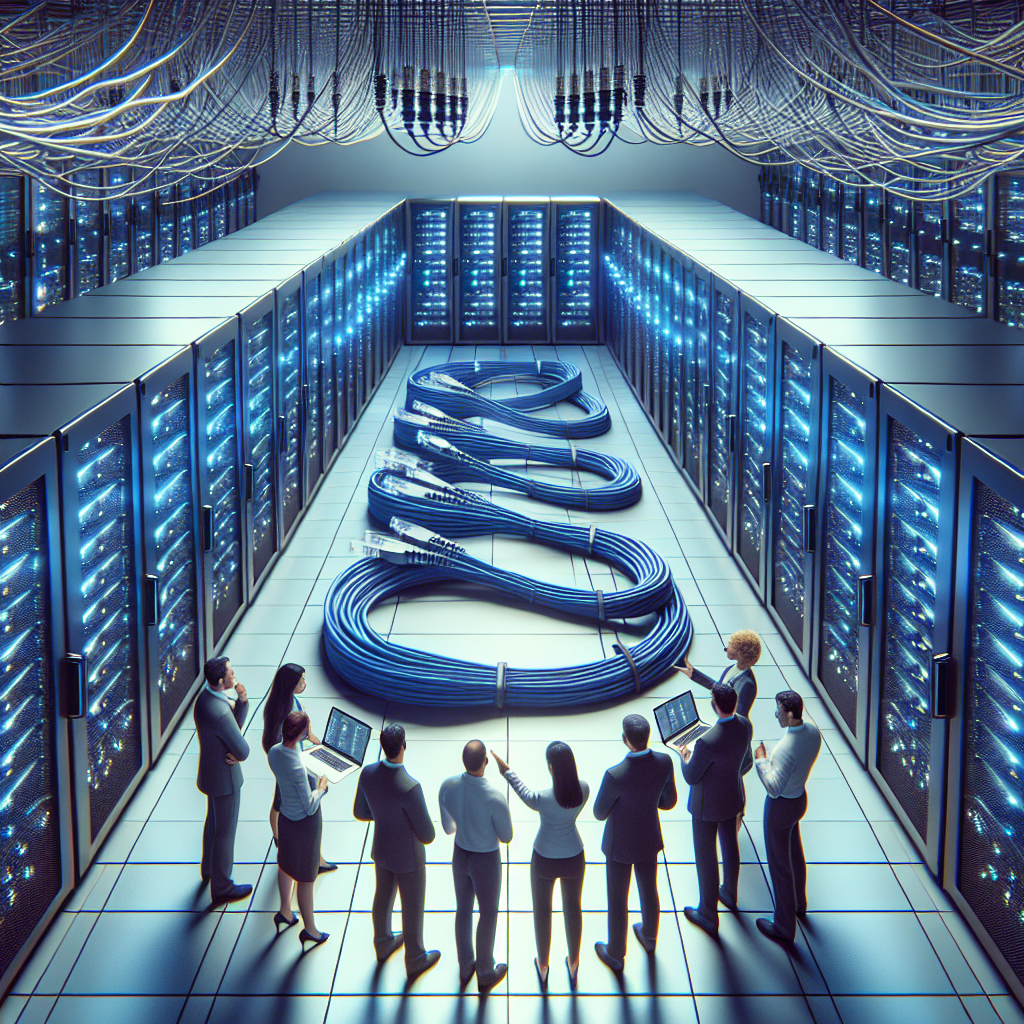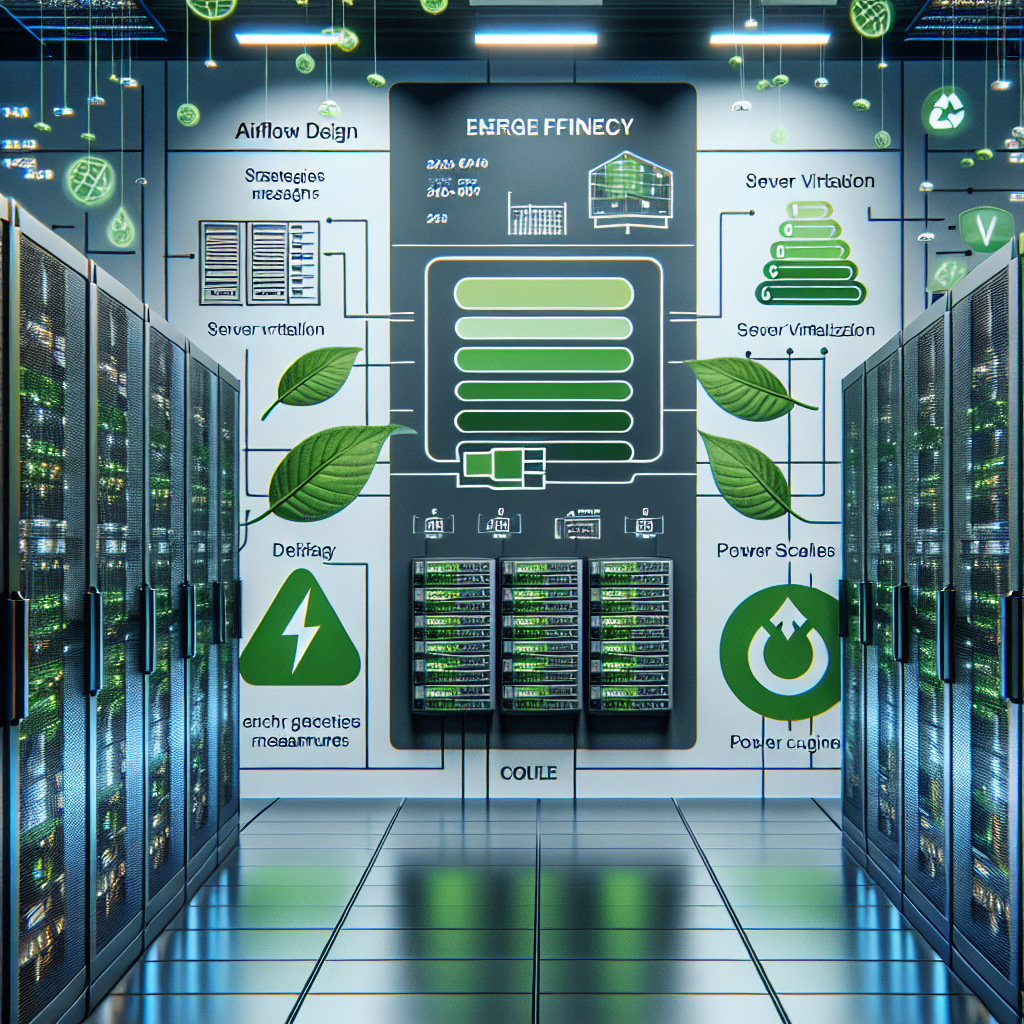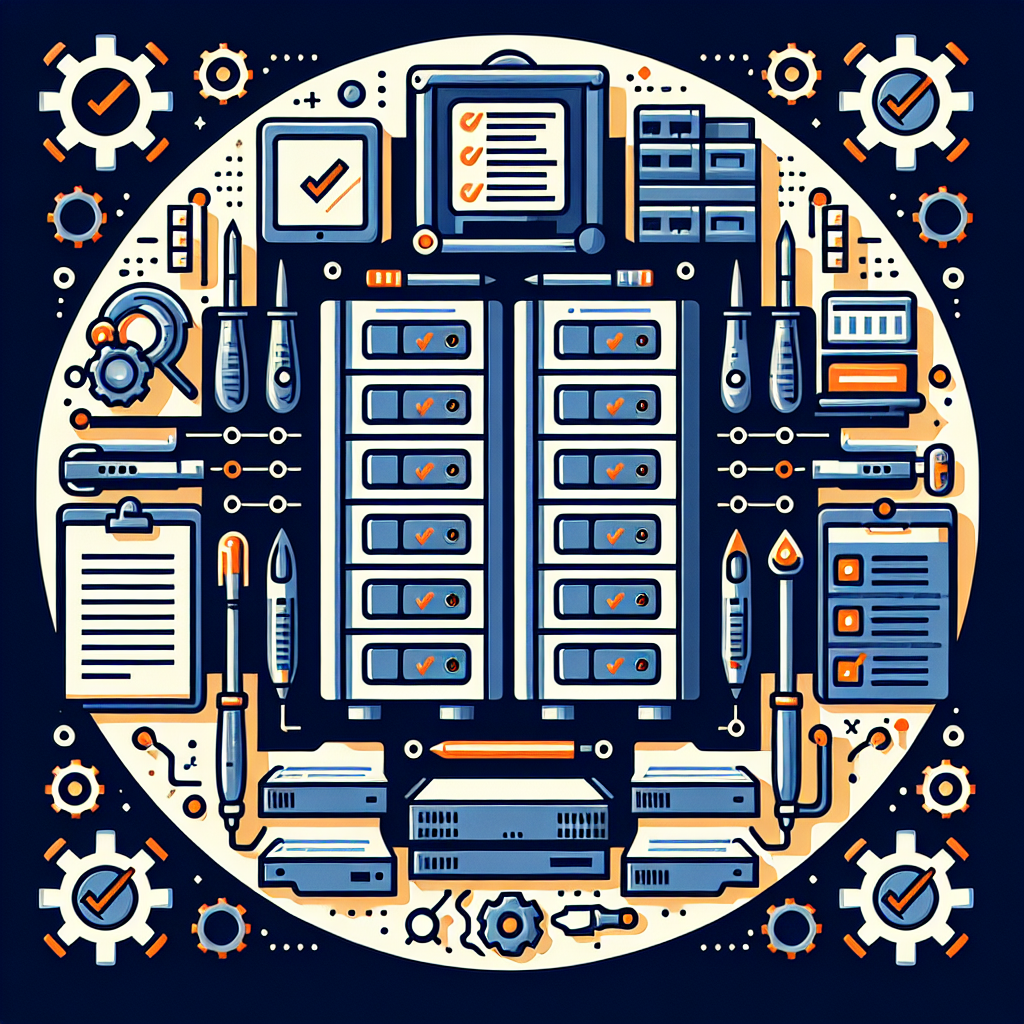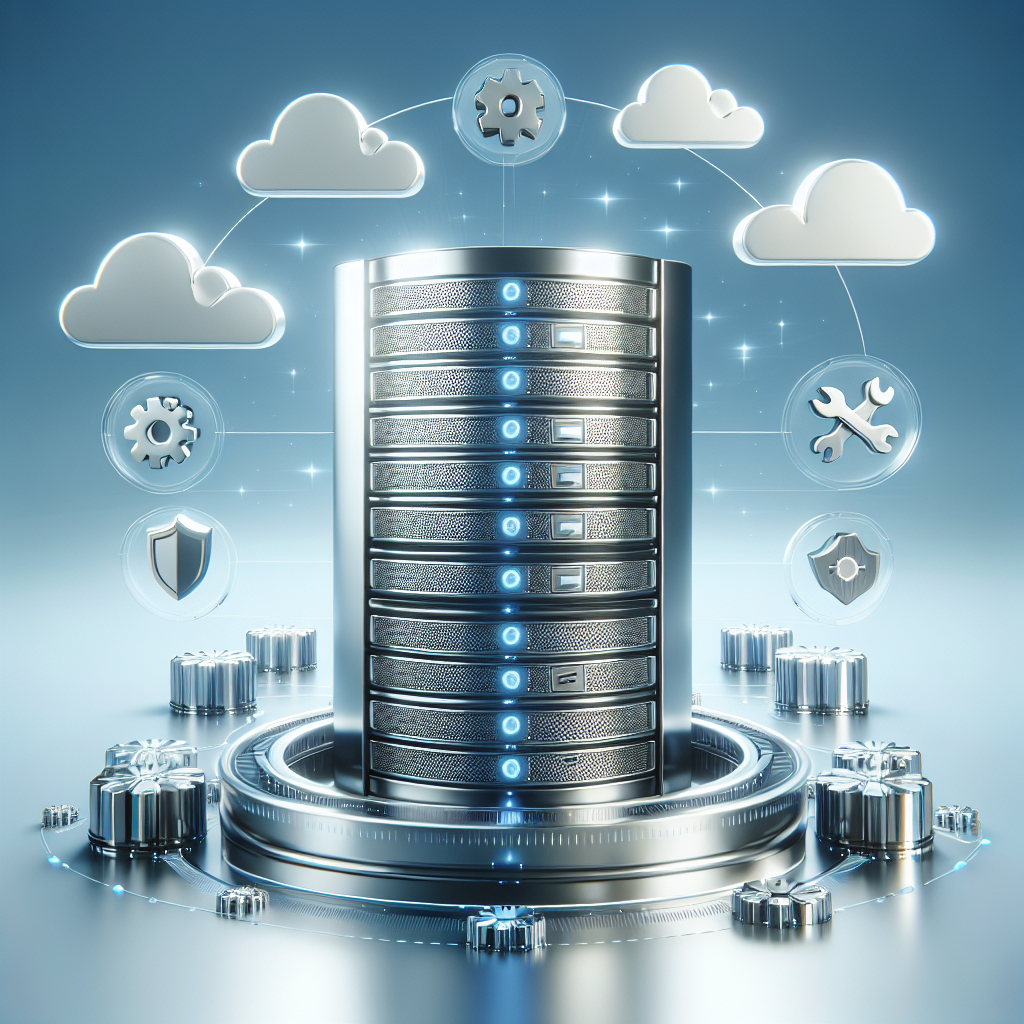Your cart is currently empty!
Tag: Practices

Navigating Data Center Change Management: Best Practices and Strategies
In today’s fast-paced business environment, data centers play a crucial role in supporting critical business operations. As technology continues to evolve, data centers are constantly undergoing changes to keep up with the latest trends and advancements. However, managing these changes can be a complex and challenging process that requires careful planning and execution. In this article, we will explore best practices and strategies for navigating data center change management to ensure a smooth and successful transition.1. Establish a clear change management process: To effectively manage data center changes, it is essential to have a well-defined and structured change management process in place. This process should outline the steps involved in planning, implementing, and testing changes to minimize disruptions and ensure the stability and reliability of the data center environment.
2. Identify and assess risks: Before implementing any changes, it is important to identify and assess potential risks that could impact the data center operations. This includes evaluating the potential impact of the changes on system performance, security, and availability. By understanding the risks involved, organizations can develop mitigation strategies to address potential issues before they occur.
3. Communicate effectively: Effective communication is key to successful change management. It is essential to keep all stakeholders informed and updated throughout the change process, including IT teams, business leaders, and end-users. By keeping everyone informed and engaged, organizations can minimize resistance to change and ensure a smooth transition.
4. Test changes in a controlled environment: Before implementing changes in the production environment, it is important to test them in a controlled environment to identify any potential issues or conflicts. This allows organizations to address any issues before they impact the production environment and ensures a smooth transition.
5. Monitor and measure the impact of changes: After implementing changes, it is important to monitor and measure their impact on the data center environment. This includes monitoring performance metrics, system availability, and user feedback to ensure that the changes have been successful and meet the desired objectives. By monitoring the impact of changes, organizations can quickly identify and address any issues that arise.
6. Continuously improve and adapt: Change management is an ongoing process that requires continuous improvement and adaptation. It is important to regularly review and update the change management process to incorporate lessons learned and best practices. By continuously improving and adapting the change management process, organizations can effectively navigate data center changes and ensure the stability and reliability of their data center environment.
In conclusion, navigating data center change management requires careful planning, effective communication, and a structured process. By following best practices and strategies, organizations can successfully manage data center changes and ensure a smooth and successful transition. By establishing a clear change management process, identifying and assessing risks, communicating effectively, testing changes in a controlled environment, monitoring and measuring the impact of changes, and continuously improving and adapting the process, organizations can navigate data center changes with confidence and achieve their desired outcomes.

Maximizing Data Center Energy Efficiency: Best Practices and Strategies
In today’s digital age, data centers play a crucial role in storing and processing vast amounts of information for businesses and organizations. With the increasing demand for data storage, data centers are consuming more energy than ever before. In fact, data centers are known to be one of the largest consumers of electricity in the world. As a result, maximizing energy efficiency in data centers has become a top priority for many organizations.There are several best practices and strategies that can be implemented to maximize data center energy efficiency. By following these practices, organizations can not only reduce their energy consumption and carbon footprint but also lower their operational costs.
One of the key strategies for maximizing data center energy efficiency is to optimize cooling systems. Cooling systems are essential for maintaining the optimal temperature within the data center to ensure that servers and other equipment operate efficiently. By implementing efficient cooling systems, organizations can reduce energy consumption and lower cooling costs. This can be achieved by utilizing hot and cold aisle containment systems, implementing economizer cooling systems, and using energy-efficient cooling technologies such as chilled water systems and precision air conditioning units.
Another important best practice for maximizing data center energy efficiency is to implement virtualization. Virtualization allows organizations to consolidate multiple physical servers onto a single server, reducing the overall number of servers required and decreasing energy consumption. By virtualizing servers, organizations can increase resource utilization, reduce power consumption, and lower cooling requirements.
In addition to optimizing cooling systems and implementing virtualization, organizations can also maximize data center energy efficiency by conducting regular energy audits. Energy audits involve analyzing the energy consumption of the data center and identifying areas where energy efficiency can be improved. By conducting energy audits, organizations can identify energy-saving opportunities, implement energy-efficient technologies, and monitor energy usage to ensure that data center operations remain efficient.
Furthermore, organizations can maximize data center energy efficiency by implementing energy-efficient hardware and equipment. Investing in energy-efficient servers, storage devices, and networking equipment can significantly reduce energy consumption and operational costs. Additionally, organizations can also consider using renewable energy sources such as solar or wind power to power their data centers, further reducing their carbon footprint.
Overall, maximizing data center energy efficiency requires a combination of best practices and strategies. By optimizing cooling systems, implementing virtualization, conducting energy audits, and investing in energy-efficient hardware, organizations can reduce energy consumption, lower operational costs, and contribute to a more sustainable future. As the demand for data storage continues to grow, it is essential for organizations to prioritize energy efficiency in their data center operations.

Ensuring Business Continuity in Data Centers: Strategies and Best Practices
In today’s digital age, data centers are the backbone of any organization’s operations. They house critical information, applications, and infrastructure that are essential for the day-to-day functioning of businesses. As such, ensuring business continuity in data centers is paramount to the success and longevity of any organization.Business continuity refers to the ability of an organization to continue operating in the face of disruptions, whether they be natural disasters, cyber attacks, or human error. In the context of data centers, this means implementing strategies and best practices that minimize downtime, ensure data integrity, and maintain operations even in the event of unforeseen events.
One of the key strategies for ensuring business continuity in data centers is implementing a robust disaster recovery plan. This plan should outline procedures for backing up data, restoring systems, and resuming operations in the event of a disaster. Regular testing and updating of the disaster recovery plan is also crucial to ensure its effectiveness when needed.
Another important aspect of business continuity in data centers is redundancy. This involves having backup systems, power sources, and network connections in place to ensure that operations can continue even if one component fails. Redundancy can be costly, but the cost of downtime and lost data far outweighs the initial investment in redundant systems.
Regular maintenance and monitoring of data center infrastructure is also essential for ensuring business continuity. This includes conducting regular inspections, performing software updates, and monitoring system performance to identify potential issues before they escalate into major problems.
In addition to these strategies, data centers should also have a comprehensive security plan in place to protect against cyber threats and unauthorized access. This may include implementing firewalls, encryption, access controls, and regular security audits to ensure the integrity of data and systems.
Overall, ensuring business continuity in data centers requires a proactive approach that includes disaster recovery planning, redundancy, regular maintenance, and robust security measures. By implementing these strategies and best practices, organizations can minimize downtime, protect critical data, and ensure that their operations continue uninterrupted in the face of disruptions.

Best Practices for Data Center Maintenance
Data centers are the backbone of modern businesses, housing the critical infrastructure that supports the digital operations of organizations. As such, it is crucial to implement best practices for data center maintenance to ensure optimal performance, reliability, and security.Regular Inspections and Preventive Maintenance
One of the key best practices for data center maintenance is to conduct regular inspections and preventive maintenance. This involves checking the physical infrastructure of the data center, such as cooling systems, power distribution units, and cabling, to identify and address any potential issues before they escalate into costly problems.
Regular inspections can help to prevent downtime and ensure that the data center is operating at peak efficiency. It is important to establish a maintenance schedule and adhere to it diligently to keep the data center running smoothly.
Temperature and Humidity Control
Maintaining the proper temperature and humidity levels in the data center is essential to prevent equipment overheating and ensure optimal performance. Monitoring and controlling the temperature and humidity levels can help to prolong the life of the equipment and reduce the risk of downtime due to overheating.
Implementing a robust cooling system and ensuring proper air circulation within the data center are key components of temperature and humidity control. Regularly monitoring and adjusting the cooling system to maintain the ideal conditions for the equipment is crucial for data center maintenance.
Backup Power Systems
Data centers rely on backup power systems to ensure uninterrupted operation in the event of a power outage. Regular testing and maintenance of backup power systems, such as generators and uninterruptible power supply (UPS) units, are essential to guarantee that they will function as intended during a power failure.
Testing the backup power systems periodically and replacing batteries as needed can help to prevent unexpected failures and ensure that the data center remains operational during emergencies. It is also important to have a contingency plan in place in case the backup power systems fail to operate effectively.
Security Measures
Data centers house sensitive and valuable information, making security a top priority for data center maintenance. Implementing physical security measures, such as access control systems, surveillance cameras, and security guards, can help to protect the data center from unauthorized access and potential security breaches.
Regularly reviewing and updating security policies and procedures, conducting security audits, and training staff on security best practices are essential for maintaining a secure data center environment. It is important to stay informed about the latest security threats and trends in order to implement effective security measures.
Conclusion
Implementing best practices for data center maintenance is essential for ensuring the reliability, performance, and security of the critical infrastructure that supports modern businesses. Regular inspections and preventive maintenance, temperature and humidity control, backup power systems, and security measures are key components of effective data center maintenance. By following these best practices, organizations can minimize downtime, reduce the risk of equipment failures, and protect their valuable data assets.

Best Practices for Server Maintenance: How to Avoid Downtime and Data Loss
Server maintenance is a crucial aspect of keeping your business operations running smoothly. Without regular maintenance, servers can become vulnerable to downtime and data loss, which can have serious consequences for your business. To avoid these issues, it is important to follow best practices for server maintenance.Here are some tips to help you keep your servers in top shape and prevent downtime and data loss:
1. Regularly update your server software: Keeping your server software up to date is essential for maintaining security and performance. Make sure to install updates and patches as soon as they are released to prevent vulnerabilities that could be exploited by hackers.
2. Monitor server performance: Keep an eye on server performance metrics such as CPU usage, memory usage, and network traffic. Monitoring these metrics can help you identify potential issues before they lead to downtime.
3. Backup your data regularly: Data loss can occur due to hardware failure, human error, or malicious attacks. To protect your data, make sure to regularly back up your server data to an offsite location. This will ensure that you can quickly recover your data in the event of a disaster.
4. Implement a disaster recovery plan: In addition to regular backups, it is important to have a disaster recovery plan in place. This plan should outline the steps to take in case of a server failure or data loss, including how to restore data and get your servers back up and running.
5. Perform routine maintenance tasks: Regular maintenance tasks such as disk cleanup, defragmentation, and software updates can help prevent performance issues and ensure the smooth operation of your servers. Make sure to schedule these tasks regularly to keep your servers running efficiently.
6. Secure your server infrastructure: Protecting your servers from security threats is essential for preventing downtime and data loss. Implement strong security measures such as firewalls, antivirus software, and intrusion detection systems to safeguard your servers from cyber attacks.
By following these best practices for server maintenance, you can avoid downtime and data loss and keep your business operations running smoothly. Remember that prevention is key when it comes to server maintenance, so be proactive in taking care of your servers to ensure their continued reliability and performance.
